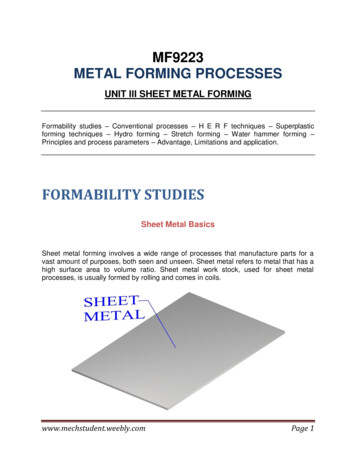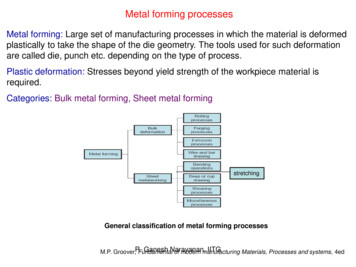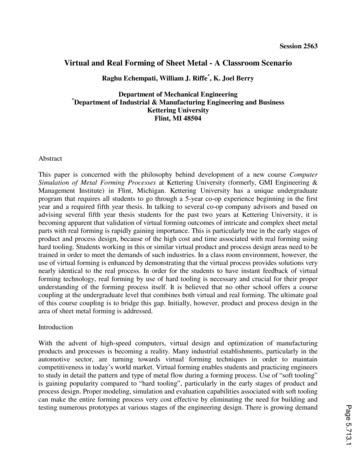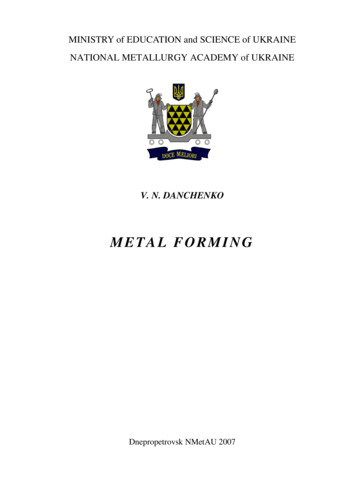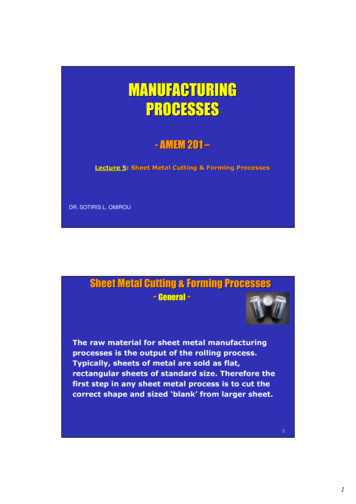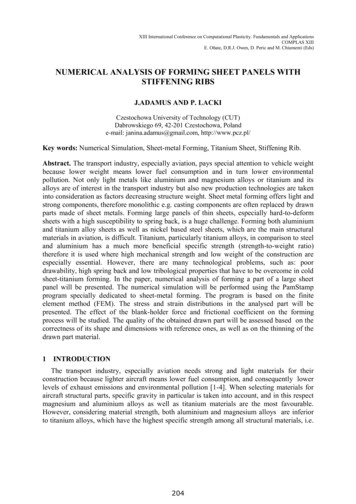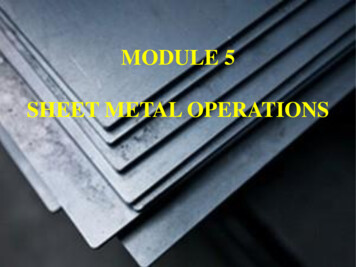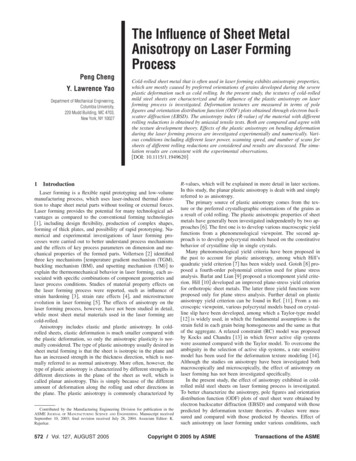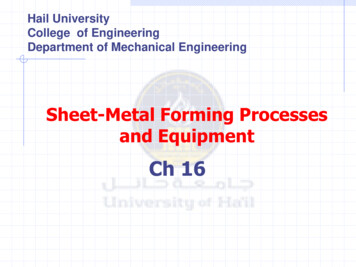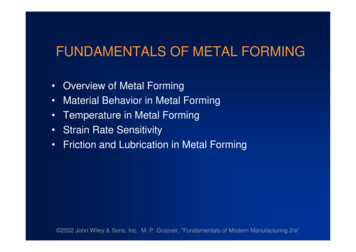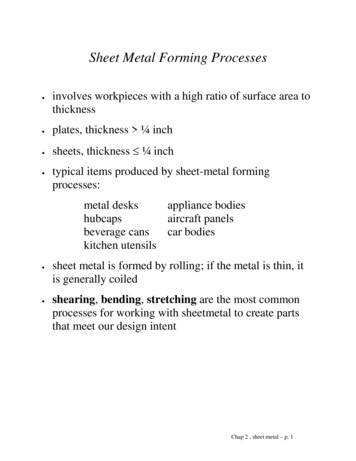
Transcription
Sheet Metal Forming Processes involves workpieces with a high ratio of surface area tothickness plates, thickness ¼ inch sheets, thickness ¼ inch typical items produced by sheet-metal formingprocesses:metal desksappliance bodieshubcapsaircraft panelsbeverage canscar bodieskitchen utensils sheet metal is formed by rolling; if the metal is thin, itis generally coiled shearing, bending, stretching are the most commonprocesses for working with sheetmetal to create partsthat meet our design intentChap 2 , sheet metal – p. 1
SHEARING cutting sheet metal by subjecting it to shear stresses punch and die variables of the shearing processpunch forcespeed of the punchlubricationpunch and die materialscorner radii of punch and dieclearance between punch and dieChap 2 , sheet metal – p. 2
the clearance distance between the punch and die is themajor factor determining the shape and quality of thesheared edge as the clearance increases, the edges become rougher the punch does not have to go all the way through thesheet a burr is usually formed on the sheet and the slugChap 2 , sheet metal – p. 3
the maximum needed punch force can be calculatedfrom the formulaP 0.7 (UTS) t Lwhere UTS is the ultimate tensile strength of the sheetmetal, t is the thickness, and L is the total length of thesheared edge two operations –punching – the sheared slug is discardedblanking – the slug is the part and the rest is scrapChap 2 , sheet metal – p. 4
Shearing operationspunching -the sheared slug is discardedblanking -the slug is the part and the rest is scrapperforating - punching a number of holes in a sheetparting -shearing the sheet into two or morepiecesnotching -removing pieces from the edgelancing -leaving a tab without removing anymaterialChap 2 , sheet metal – p. 5
BENDING outer fibers are in tensioninner fibers are in compression a minimum bend radius is usually stated in terms of thesheet’s thickness (ex. 2T, 3T, 4T) the minimum bend radius for various materials has beendetermined experimentally and is available inhandbooksConditionSoftHardAluminum alloys06TBeryllium copper04TBrass, low-leaded02T5T13 Taustenitic stainless0.5 T6Tlow carbon, low alloy0.5 T4TMaterialMagnesiumSteelsChap 2 , sheet metal – p. 6
cracking during bending is related to the rollingdirection plastic deformation is followed by elastic recovery orspringback the final bend angle after springback is smaller the final bend radius after springback is larger springback is usually compensated for by overbending Chap 2 , sheet metal – p. 7
Common Bending Operations press brake forming – press the sheet between two dies air bending, roller bendingChap 2 , sheet metal – p. 8
beadingthe edge of the sheet is bent into the cavity of adieChap 2 , sheet metal – p. 9
flanging - bending the edges of the sheet hemming (flattening)- the edge of the sheet is folded over itself- improves appearance and removes sharp edges- seaming involves joining two edges by hemmingChap 2 , sheet metal – p. 10
roll forming- used for bending continuous lengths of material- metal sheet is bent in stages by passing it through aseries of rolls- typical productschannelssidingframesgutterspanelspipes and tubing with lock seams- rolling speed is typically about 1.5 m/s (300 ft/min)Chap 2 , sheet metal – p. 11
deep drawing- a flat sheet is formed into a cylindrical or boxshaped part by a punch that presses the blankinto the die cavity- developed in the 1700’s- typical productsbeverage canspots and panscontainerssinksautomobile panelsChap 2 , sheet metal – p. 12
Chap 2 , sheet metal – p. 1 Sheet Metal Forming Processes involves workpieces with a high ratio of surface area to thickness plates, thickness ¼ inch sheets, thickness ¼ inch typical items produced by sheet-metal forming processes: metal desks appliance bodies .
